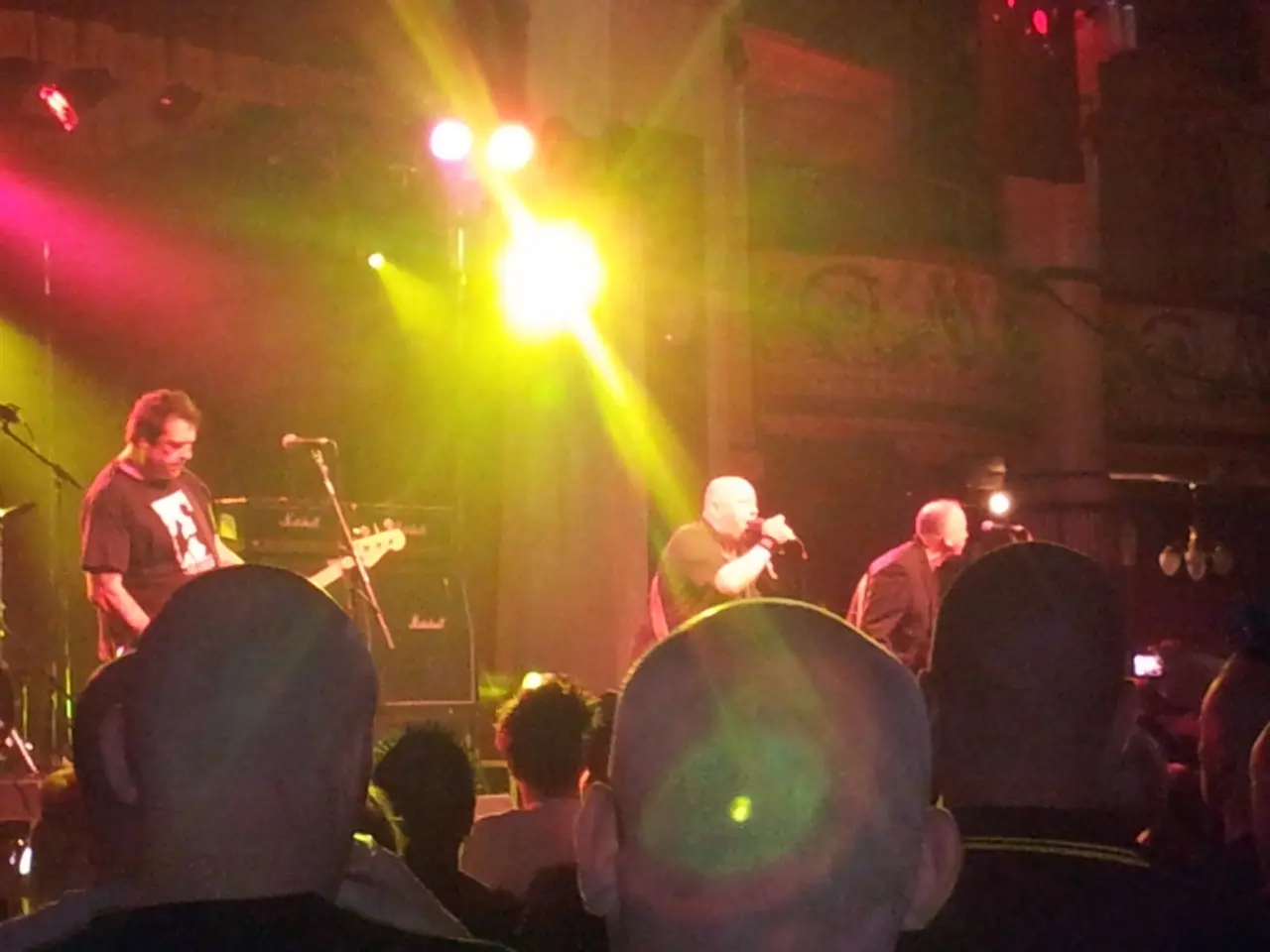Discussion: What are the leading acts in the realm of classic rock, often called the 'big four'?
In the realm of music, classic rock stands as a genre that defies a fixed definition. Its boundaries are as varied as the people who appreciate it. This subjective nature is a testament to the genre's rich history and diverse influences.
Classic rock, primarily rooted in 1950s-1970s rock and roll and blues rock, is characterized by loud, overdriven guitar riffs with a raw, distorted edge, powerful drumming, and assertive or melodic vocals. It blends electric blues, rock and roll, country, and rhythm and blues influences, often featuring prominent electric guitars, driving backbeats, and simple blues-based chord progressions.
Key defining characteristics include electric guitar prominence, strong rhythmic grooves, blues roots, song structure aimed at audience engagement, and eclectic influences reflecting cultural and geographic hybridization.
When it comes to a "big four" of classic rock bands, no single definitive list exists. However, several bands repeatedly appear across sources and critical discussions as foundational and iconic within classic rock. The Rolling Stones, Led Zeppelin, The Beatles, and Queen are often cited for their immense impact on rock music's development and popularization.
While different critics may vary, a representative "big four" of classic rock bands according to the genres’ defining characteristics and historical impact could be The Rolling Stones, Led Zeppelin, The Beatles, and Queen. This blend acknowledges blues and rock roots, innovation, broad popular appeal, and the anthemic, guitar-driven sound typical of classic rock.
However, it's essential to remember that each individual has their own definition of classic rock. Some might argue against the inclusion of The Beatles in a list of great rock bands, confining them to the world of pop. Others might expand the definition to include bands like Pink Floyd, Genesis, Black Sabbath, and Motörhead, who may not fit the traditional blues-driven sound of Led Zeppelin.
Moreover, the personal 'big four' of classic rock varies among individuals. Some programmers of classic rock radio stations in the US include artists who weren't active during the 70s if their sound fits the format. This flexibility reflects the genre's evolving nature and its ability to adapt to changing tastes.
Classic rock is often associated with the 70s era, but the definition has expanded over time. The genre's roots in blues and rock continue to influence modern music, making classic rock an enduring and dynamic genre that resonates with generations of music lovers.
[1] "Classic Rock: The Music and Its Makers" by Dave Thompson [2] "The Cambridge History of Rock Music: Volume 1" edited by Nick Straw and Mick Wall [3] "The Rolling Stone Encyclopedia of Rock & Roll" by Jon Landau and Holly George-Warren [4] "The Oxford Companion to Popular Music" edited by David Horn and Sally Ann McIntyre
- The raw, distorted guitar riffs and powerful drumming of classic rock can be traced back to its blues and rock roots.
- Electric blues, rock and roll, country, and rhythm and blues influences are often represented in classic rock's simple blues-based chord progressions and electric guitar prominence.
- The "big four" of classic rock bands, whose impact on rock music's development is immense, are often cited as The Rolling Stones, Led Zeppelin, The Beatles, and Queen.
- Some might question the inclusion of The Beatles in a list of great rock bands, placing them instead in the pop music realm.
- Expanding the definition of classic rock to include bands like Pink Floyd, Genesis, Black Sabbath, and Motörhead can be justified, as they embody the genre's eclectic influences and anthemic sound.
- Programmers of classic rock radio stations in the US include artists who weren't active during the 70s if their sound fits the format, reflecting the genre's evolving nature.
- Classic rock, originally rooted in the 1950s-1970s, continues to influence modern music, making it an enduring and dynamic genre that resonates with generations.
- To gain a comprehensive understanding of classic rock's music, makers, history, and impact, resources such as "Classic Rock: The Music and Its Makers" by Dave Thompson, "The Cambridge History of Rock Music: Volume 1" edited by Nick Straw and Mick Wall, "The Rolling Stone Encyclopedia of Rock & Roll" by Jon Landau and Holly George-Warren, and "The Oxford Companion to Popular Music" edited by David Horn and Sally Ann McIntyre can be valuable references.








